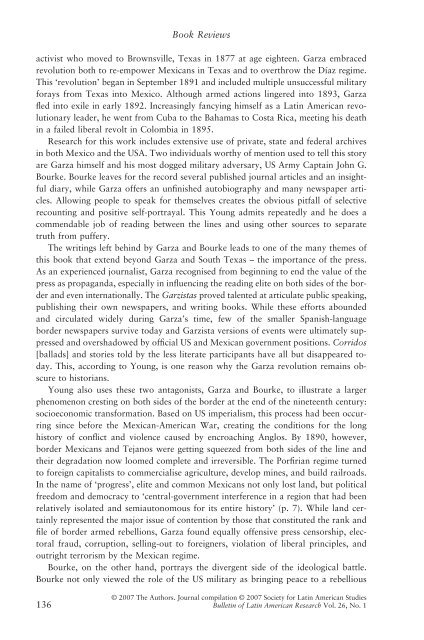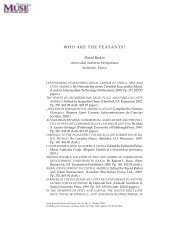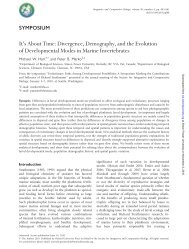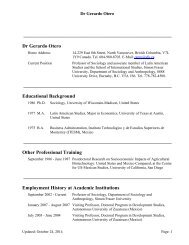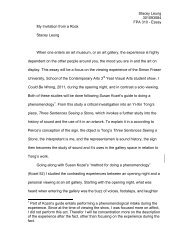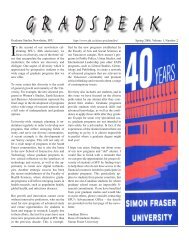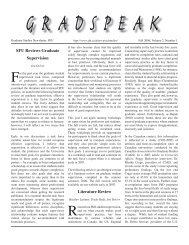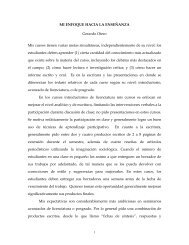Review of Mexico in Transition by Byron Crites
Review of Mexico in Transition by Byron Crites
Review of Mexico in Transition by Byron Crites
- TAGS
- transition
- byron
- crites
- cgi.sfu.ca
You also want an ePaper? Increase the reach of your titles
YUMPU automatically turns print PDFs into web optimized ePapers that Google loves.
Book <strong>Review</strong>s<br />
activist who moved to Brownsville, Texas <strong>in</strong> 1877 at age eighteen. Garza embraced<br />
revolution both to re-empower Mexicans <strong>in</strong> Texas and to overthrow the Díaz regime.<br />
This ‘ revolution ’ began <strong>in</strong> September 1891 and <strong>in</strong>cluded multiple unsuccessful military<br />
forays from Texas <strong>in</strong>to <strong>Mexico</strong>. Although armed actions l<strong>in</strong>gered <strong>in</strong>to 1893, Garza<br />
fl ed <strong>in</strong>to exile <strong>in</strong> early 1892. Increas<strong>in</strong>gly fancy<strong>in</strong>g himself as a Lat<strong>in</strong> American revolutionary<br />
leader, he went from Cuba to the Bahamas to Costa Rica, meet<strong>in</strong>g his death<br />
<strong>in</strong> a failed liberal revolt <strong>in</strong> Colombia <strong>in</strong> 1895.<br />
Research for this work <strong>in</strong>cludes extensive use <strong>of</strong> private, state and federal archives<br />
<strong>in</strong> both <strong>Mexico</strong> and the USA. Two <strong>in</strong>dividuals worthy <strong>of</strong> mention used to tell this story<br />
are Garza himself and his most dogged military adversary, US Army Capta<strong>in</strong> John G.<br />
Bourke. Bourke leaves for the record several published journal articles and an <strong>in</strong>sightful<br />
diary, while Garza <strong>of</strong>fers an unfi nished autobiography and many newspaper articles.<br />
Allow<strong>in</strong>g people to speak for themselves creates the obvious pitfall <strong>of</strong> selective<br />
recount<strong>in</strong>g and positive self-portrayal. This Young admits repeatedly and he does a<br />
commendable job <strong>of</strong> read<strong>in</strong>g between the l<strong>in</strong>es and us<strong>in</strong>g other sources to separate<br />
truth from puffery.<br />
The writ<strong>in</strong>gs left beh<strong>in</strong>d <strong>by</strong> Garza and Bourke leads to one <strong>of</strong> the many themes <strong>of</strong><br />
this book that extend beyond Garza and South Texas – the importance <strong>of</strong> the press.<br />
As an experienced journalist, Garza recognised from beg<strong>in</strong>n<strong>in</strong>g to end the value <strong>of</strong> the<br />
press as propaganda, especially <strong>in</strong> <strong>in</strong>fl uenc<strong>in</strong>g the read<strong>in</strong>g elite on both sides <strong>of</strong> the border<br />
and even <strong>in</strong>ternationally. The Garzistas proved talented at articulate public speak<strong>in</strong>g,<br />
publish<strong>in</strong>g their own newspapers, and writ<strong>in</strong>g books. While these efforts abounded<br />
and circulated widely dur<strong>in</strong>g Garza ’ s time, few <strong>of</strong> the smaller Spanish-language<br />
border newspapers survive today and Garzista versions <strong>of</strong> events were ultimately suppressed<br />
and overshadowed <strong>by</strong> <strong>of</strong>fi cial US and Mexican government positions. Corridos<br />
[ballads] and stories told <strong>by</strong> the less literate participants have all but disappeared today.<br />
This, accord<strong>in</strong>g to Young, is one reason why the Garza revolution rema<strong>in</strong>s obscure<br />
to historians.<br />
Young also uses these two antagonists, Garza and Bourke, to illustrate a larger<br />
phenomenon crest<strong>in</strong>g on both sides <strong>of</strong> the border at the end <strong>of</strong> the n<strong>in</strong>eteenth century:<br />
socioeconomic transformation. Based on US imperialism, this process had been occurr<strong>in</strong>g<br />
s<strong>in</strong>ce before the Mexican-American War, creat<strong>in</strong>g the conditions for the long<br />
history <strong>of</strong> confl ict and violence caused <strong>by</strong> encroach<strong>in</strong>g Anglos. By 1890, however,<br />
border Mexicans and Tejanos were gett<strong>in</strong>g squeezed from both sides <strong>of</strong> the l<strong>in</strong>e and<br />
their degradation now loomed complete and irreversible. The Porfi rian regime turned<br />
to foreign capitalists to commercialise agriculture, develop m<strong>in</strong>es, and build railroads.<br />
In the name <strong>of</strong> ‘ progress ’ , elite and common Mexicans not only lost land, but political<br />
freedom and democracy to ‘ central-government <strong>in</strong>terference <strong>in</strong> a region that had been<br />
relatively isolated and semiautonomous for its entire history ’ (p. 7). While land certa<strong>in</strong>ly<br />
represented the major issue <strong>of</strong> contention <strong>by</strong> those that constituted the rank and<br />
fi le <strong>of</strong> border armed rebellions, Garza found equally <strong>of</strong>fensive press censorship, electoral<br />
fraud, corruption, sell<strong>in</strong>g-out to foreigners, violation <strong>of</strong> liberal pr<strong>in</strong>ciples, and<br />
outright terrorism <strong>by</strong> the Mexican regime.<br />
Bourke, on the other hand, portrays the divergent side <strong>of</strong> the ideological battle.<br />
Bourke not only viewed the role <strong>of</strong> the US military as br<strong>in</strong>g<strong>in</strong>g peace to a rebellious<br />
© 2007 The Authors. Journal compilation © 2007 Society for Lat<strong>in</strong> American Studies<br />
136 Bullet<strong>in</strong> <strong>of</strong> Lat<strong>in</strong> American Research Vol. 26, No. 1


